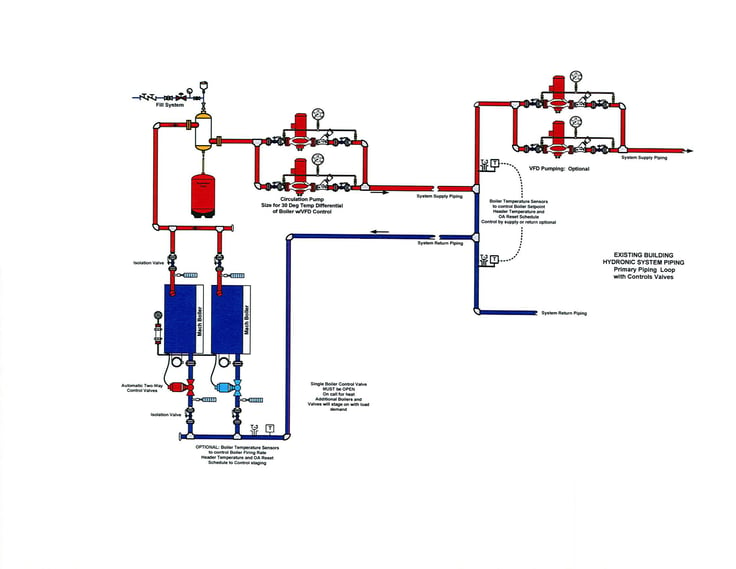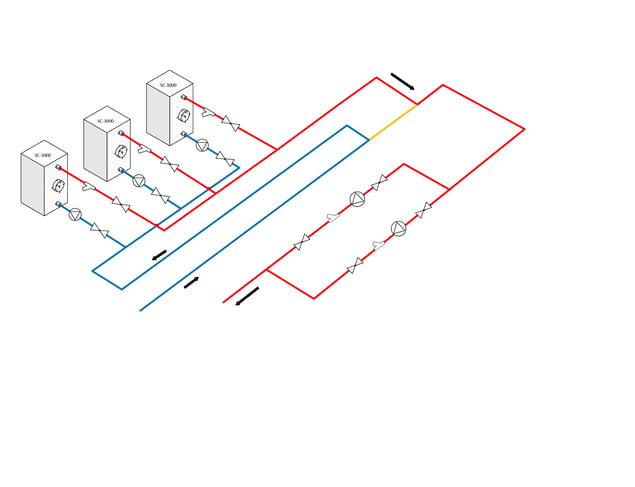When it comes to installing commercial boilers and water heaters, selecting the right piping method is crucial for optimal performance and energy efficiency. Various piping methods are employed to ensure proper circulation and heat distribution within the system. In this blog, we will explore different piping methods commonly used in commercial settings, offering a comparative analysis to help you make an informed decision based on your specific requirements.
1. Primary-Secondary Piping: Primary-secondary piping, also known as "hydraulic separation," involves separating the primary loop from the secondary loop. In this method, the primary loop connects the boiler or water heater to the pumps, while the secondary loop connects to the distribution system. The primary loop maintains constant flow through the boiler, while the secondary loop allows variable flow rates for different zones. This method offers excellent control, especially in systems with varying demands, ensuring optimal performance and energy efficiency.
2. Variable Primary Flow Piping: Variable primary flow piping, also referred to as a "one-pipe system," utilizes a single loop to supply both the boiler and the distribution system. In this method, the flow rate is adjusted based on the system's demand, ensuring efficient operation. The variable primary flow piping is suitable for systems with relatively constant loads and limited variations in temperature requirements. It simplifies installation and reduces energy consumption but may result in temperature fluctuations in different zones.


Selecting the appropriate piping method for commercial boilers and water heaters is crucial to ensure efficient and reliable operation. Primary-secondary, variable primary flow, primary-variable secondary, and primary-secondary-tertiary piping methods all offer unique benefits and considerations. Factors such as system demand, temperature requirements, energy efficiency goals, and budget should guide your decision-making process. Consulting with HVAC professionals and engineers is highly recommended to evaluate your specific needs and determine the most suitable piping method for your commercial application.
By understanding the characteristics and capabilities of different piping methods, you can make an informed decision that aligns with your requirements, ensuring optimal performance, energy efficiency, and comfort in your commercial space

